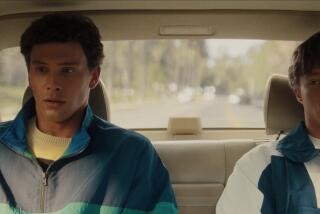Glass and Wilson Have Quelled Their Troublesome ‘Monsters’
- Share via
When Los Angeles saw Philip Glass and Robert Wilson’s “Monsters of Grace” last April, it was touted almost sheepishly as Version 1.0, implying that new and improved editions were on the way. Knowing that, and seeing the uneasy fusion of seven completed 3-D film segments and six hurriedly thrown together live segments, it seemed best to wait for them to get the bugs out before buying into it.
Now that Version 4.0 is out, one needn’t hesitate any longer. All 13 film segments--courtesy of the Kleiser-Walczak Construction Co.--are in place, the piece has been road-tested for nearly a year, and in its single encore performance at Royce Hall Tuesday night, “Monsters” made a much more coherent, even moving impression.
With the house lights now turned on during the first part of the initial segment, you can imagine that you are settling into a series of cool, dream-like states that sometimes turn into nightmares. This happens most graphically in one of the new sequences, a stunning travelogue in which a family atop a suburban house floats past a jungle island, a teeming big city and into the open sea before encountering a horrific serpent.
Other new segments were launched with recurring geometric shapes, visions of the sky and bodies of water that transform themselves. Version 1.0 tried to turn a similar trick with live recurring images, but the effect is far more unified now in the all-film medium, and the images are sharper and more evenly distributed in the 3-D perspective. Interestingly, the films for “Let the Letter Read You” (a polar bear) and “An Artist Comes to Paint You” (a table setting) have been reversed from their positions in 1.0, though the score was presented in the same order as before. If this were traditional opera or film, that would matter a lot, but since the music operates independently from the images, it made hardly any difference.
Glass’ score--with its contemplative lyricism spiced with samples of Middle Eastern and Asian instruments--was performed with even more assurance and panache by the Philip Glass Ensemble, with the composer taking his usual place at a keyboard to the right of conductor Michael Riesman.
More to Read
The biggest entertainment stories
Get our big stories about Hollywood, film, television, music, arts, culture and more right in your inbox as soon as they publish.
You may occasionally receive promotional content from the Los Angeles Times.










